Introduction
Last year was nearly unprecedented for the Canadian commercial real estate industry. Canada outperformed its G7 peers riding on the strength of its welcoming immigration policies, attractive labour pool and stable operating environment. In 2020, the industry will not only move forward, several sectors will reach top speed.
At a time of trade hostilities and geopolitical shifts, Canadian commercial real estate emerged as a feel-good story – no longer simply a safe haven for investment, it is now a top destination for domestic and global capital. Gone are the days of promising Canadian graduates embarking for bigger opportunities abroad. This trend has reversed course and the world’s most prominent companies are establishing themselves in Canadian cities, attracted to the relative affordability of these markets and their deep pools of talent. Brain drain no more, big gains are likely.
Canadian commercial real estate has traditionally been conservative as an industry, unaccustomed to exuberant highs and bullish forecasts. Course corrections and adjustments will inevitably happen and it will be important to avoid knee-jerk reactions at high speeds. If the sector grows overly cautious or takes its eyes off the road ahead, it risks losing momentum and undermining our country’s competitive advantage. This appears to be Canada’s decade for the taking and there will be incredible opportunities for commercial real estate along the way.
Momentum Markers: Demand and Rising Rents
Record demand and strong fundamentals are the product of countless decisions over many years. In fact, commercial real estate is a lagging beneficiary of policy decisions, technological developments and societal changes across multiple decades. The record-setting pace of Canadian real estate growth largely stems from two forces. First, that Canadian cities have become sought-after destinations for businesses, residents and investors. Second, that real estate is widely regarded as a stable yet high-yielding investment.
Whether it’s in the form of accelerated rent growth, strong tenant demand or an unprecedented development pipeline, record-setting performances have become ubiquitous in Canadian commercial real estate. Prime office rents increased from 10.0-20.0% across the country between 2018 and 2019, up by 20.9% in Vancouver, 14.2% in Montreal and 10.1% in Toronto. Meanwhile, national industrial rents rose by $0.95 per sq. ft., or 12.3%, the largest annual increase on record. Overall national apartment rents were up by 4.2% year-over-year. This is particularly striking given that these figures include suites in markets with rent control. Even asset classes in transition are experiencing success, as evidenced by strong rental growth in high-end retail centres.
In 2020, further rental rate increases appear to be unavoidable amid record-low vacancy and strong demand. The traditional business cycle no longer seems to apply. The bull market is in its 11th year, with unmet tenant demand carrying over from one year into the next. Nearly 70% of downtown office space under construction nationally has been pre-leased and over 50% of the record amount of industrial space under construction has been spoken for.
TOP DESTINATION
Investment in Canada could exceed $50 billion
Interest from investors is supported by Canada’s world-leading banking system, attractive currency play and levered returns. The favourable financial landscape will attract more investors from around the globe and support property value growth in 2020. Optimism increases when one considers that the amount of capital on the sidelines, known as “dry powder”, is at an all-time high. The pressure to deploy capital is high as yields across the investment spectrum continue to shrink. Investor demand for commercial real estate extends beyond traditional core markets to include nodes such as West Queen West in Toronto, and smaller markets like Kitchener-Waterloo, Hamilton and the B.C. Interior.
Montreal, once a major city with second-tier investor interest, saw its investment volume climb to a record $7.5 billion in 2019, up from $6.0 billion the previous year. Investment volume could jump to more than $8.0 billion in 2020, significantly above its $4.6 billion 10-year average and a new record for commercial property transactions in that city. Canadian commercial real estate has transitioned from being regarded as a safe haven investment to a primary investment destination. However, investors assessing an increasingly limited range of top-end, core offerings have had to get creative when it comes to finding larger opportunities. This sets the stage for further mergers and acquisitions, and large-scale portfolio activity in 2020.
While 2019 fell short of hitting a fourth consecutive record for investment volume, 2020 is off to a roaring start, teeing up what could be an unprecedented $50.0 billion year. In response to this seemingly relentless bull market, construction activity is ramping up. While rising construction costs are challenging development pro-formas, market watchers are waiting to see if office and industrial rent growth will moderate following years of rapid increases. New technology is another factor that could have unexpected impacts. But most tangible will be the effect of e-commerce on the performance of bricks-and-mortar stores. While these factors may signal some moderation in the years ahead, they are unlikely to slow the momentum of the Canadian commercial real estate market in 2020.
Inside Out: Real Estate from the Tenant Perspective
As rental rates continue to climb amid record-low vacancy rates, tenants are having to make difficult choices in order to secure space that keeps them relevant and productive over the lifespan of a lease. A lack of desirable square footage in major centres is presenting a serious challenge to many companies looking to enter or expand in the Canadian market. Across the country, quality commercial space is increasingly being treated as a commodity. Touring multiple locations that align with a tenant’s desired size, location and quality of space is a rarely afforded luxury. Out of necessity, tenants are now encouraged to move quickly toward viable solutions. Landlords trying to accurately determine the value of indemand office space, warehouses and serviced land are occasionally resorting to something akin to spot pricing
Inside Out: Real Estate from the Tenant Perspective
As rental rates continue to climb amid record-low vacancy rates, tenants are having to make difficult choices in order to secure space that keeps them relevant and productive over the lifespan of a lease. A lack of desirable square footage in major centres is presenting a serious challenge to many companies looking to enter or expand in the Canadian market. Across the country, quality commercial space is increasingly being treated as a commodity. Touring multiple locations that align with a tenant’s desired size, location and quality of space is a rarely afforded luxury. Out of necessity, tenants are now encouraged to move quickly toward viable solutions. Landlords trying to accurately determine the value of indemand office space, warehouses and serviced land are occasionally resorting to something akin to spot pricing
Large institutional office tenants, scaling technology companies and distribution centre tenants are better able to take these hurdles in stride, while smaller tenants are more likely to struggle to adapt to these shifting dynamics. In some instances, government real estate tax rates, not rental rates, are causing problems. In Calgary and Edmonton, rising taxes have driven industrial tenants outside of the city limits. Prohibitive property taxes have forced some retailers to close shop altogether in these, and other, urban centres.
Sensors to help repurpose and optimize space
Where margins are healthier, tenants are mostly motivated by alignment with corporate culture, ease of transaction and flexibility in their real estate strategies. In years past, a top office tenant might have been tempted by a heavily induced 10-year deal; today they seek the agility of a one to three-year deal, even if it comes with a hefty price tag. Even once space is secured, other challenges present themselves. The rapid growth of technology, changing demographics and a shifting global economic environment have all led to increased unpredictability. At a time when businesses are driven to be more dynamic, long-hold leases make adapting to change increasingly difficult. Addressing changing business and employee needs often requires adapting workspaces. Increasingly, everything from meeting rooms to cafeteria spaces will be monitored with the help of sensors so that they can be repurposed and optimized during an existing lease.
Meanwhile, industrial tenants are making decisions in a world of increasing automation. Flexibility in built form is key, especially when the capabilities of future technology remain largely unknown. And while some tenants can relocate to increasingly distant suburbs in search of cheaper rent, others from last mile logistics, film production and self-storage cannot. Rising build-out costs, trades shortages and lengthy permitting processes can also add stress prior to occupancy. While real estate costs currently represent only a fraction of the overall price tag for office and industrial occupiers, high rents combined with limited quality space could begin to create friction in business decision-making and slow economic growth. It is in the best interest of all stakeholders, especially government and landlords who have multi-decade investment horizons, to help attract and support tenants in this era of dynamic change.
Creative Solutions: Occupiers Rising to the Challenge
Occupiers looking to succeed in a tight market will need ingenuity, resolve, advance planning and the guidance of industry experts. In cities across the country, office tenants are adapting their plans as they are met with harsh realities. When growth across contiguous floors is not possible, more and more office occupiers are considering a hub and spoke model, where a traditional office houses the headquarters of the business and secondary locations, whether in the same market or a different city, enable agility and growth.
Downtown connectivity and amenities will remain highly sought after, however, non-core locations with transit connectivity will attract new office development and eager tenants in 2020. In Toronto for example, the Junction, Downtown East and Liberty Village will become increasingly mainstream office nodes. Where space is entirely lacking or misaligned with occupier requirements, tenants will continue to turn toward coworking and flexible real estate operators, which provide much needed agility and desirable amenities in otherwise unyielding markets.
Occupiers hoping to densify an existing or new space may also come up against unforeseen limitations. Cost-efficient workplace strategies, including dedicated floors to hot-desking and open workspaces, were once lauded as a way to justify steep rental costs, but have proven to be problematic. These strategies are being re-evaluated to account for the potential loss of productivity, increase in noise, and lack of opportunities to personalize surroundings
CREATIVE SOLUTIONS: OCCUPIERS RISING TO THE CHALLENGE
In the industrial market, very limited large bay options are forcing tenants to reconsider their desire to have all operations housed in a single distribution centre in a major centre. To avoid the operational and transportation inefficiencies that an ill-suited site might cause, companies are pivoting to bookend the city with smaller mid-sized locations. The role of strategic partnerships is also growing. As operations become more complex and the availability of space remains low, companies are solving for this by outsourcing functions which had formerly been completed in-house to third-party logistics firms. As lease terms extend and skilled labour becomes increasingly expensive and scarce, some industrial occupiers are turning to technology and automation to help drive performance. Automation implementation costs are expected to decrease as industrial robot costs are forecast to fall another 50% over the next five years. For their part, wages are up 7% to over 20%, depending on the specific role, and are only forecast to keep rising.
Other efficiencies are being found in built form, with clear heights increasing to maximize cubic space and allow for impressive racking systems to be built right into the frame of industrial facilities. 40’ clear heights will be the new norm for speculative developments, while build-to-suit construction has made 90’ clear heights possible. Not long ago, these types of buildings and multi-storey distribution facilities would have been unthinkable. For their part, retailers are embracing the evolution of the omnichannel model, reaching their customers through a successful online presence bolstered by fewer, but higherprofile, bricks-and-mortar locations in primary markets. Portfolio trimming will allow service-focused tenants, from boutique fitness to food and beverage companies, to step up to the plate to occupy well-located street-front centres. No matter the sector, planning ahead is the only real solution for tenants facing difficult circumstances. Further steps must be taken to increase agility, including the involvement of the entire C-suite to better forecast headcount growth and hiring workplace experts to help de-risk the process.
While commercial real estate trends typically emerge and become most prominent in Canada’s largest cities, there’s plenty happening in its smaller markets. Global events and broader workplace trends are shaping investment and real estate decisions across the country, which will put smaller cities in the spotlight in 2020. Capital flows typically gravitate to core assets in major markets. While this will remain true in 2020, the dynamics at play will support healthy investment volumes in secondary and tertiary markets. Domestic players looking to compete with foreign capital in major markets and de-risk their portfolios have already begun targeted disposition programs that will unlock assets in smaller cities. Expect mid-sized domestic players and private capital to jump at the chance to acquire higher-yielding assets in places like Ottawa, Waterloo Region and the province of Quebec in the year ahead.
Smaller markets are also expected to receive a boost from a variety of real estate trends, including spillover from highdemand major markets. Logistics companies are making their way to areas around Toronto, increasing demand in Milton, Pickering Ajax, Hamilton, Kitchener-Waterloo and Guelph. Office tenants in Vancouver are increasingly comfortable with options in Burnaby and beyond. This trend can be seen across property types, as tenants search for more suitable offerings further afield. In fact, desirable submarkets located within secondary cities with serviced land and a pool of skilled labour could expect to see rents rise by as much as 15.0% in the coming year.
And despite the fact that major players have exited some of the smaller retail markets in recent years, local ownership and knowledge can give properties new life. Locally-driven innovative strategies are expected to transform portions of malls and community centres into office spaces and homes for public services like police departments and libraries. Significant opportunities for land sales and development exist in secondary markets with public transit connections. Suburban “downtowns” are popping up in major geographies, including Vaughan Metropolitan Centre, Downsview Park and Downtown Markham in the Greater Toronto Area. There are also intensification opportunities for retail centres, hotels and seniors housing complexes that become unlocked by transit expansions beyond dense urban cores. This is already playing out in the areas surrounding Vancouver and Montreal where large public transit investments are taking shape. While it is easy to focus on activity in major markets, there are large suburban populations and vibrant businesses across Canada. Smaller cities will get a closer look in 2020.
New & Evolving Uses
Amid limited space and high demand, sectors across the Canadian commercial real estate industry are embracing innovative uses of space. Office tenants and developers are exploring new workplace solutions, balancing cost with organizational culture. As tech companies continue to set a new standard for unique modern offices, other businesses are taking note, implementing new technologies like employee sensor-monitoring, virtual reality decision making and data-driven headcount modelling. In the multifamily sector, much has been made of co-living, which offers residents high-quality units with shared living spaces and amenities. While U.S. and UK based companies Common and Node are beginning to establish themselves in the Canadian market, they are unlikely to challenge the existing traditional rental model anytime soon. Meanwhile, the retail sector is rethinking uses for spaces in prime locations. Storefronts are being transitioned into pick-up stations for everything from food to apparel, while secondfloor and podium retail spaces in mixed-use properties are being leased for office use.
The rise of “ghost kitchens” – food preparation and cooking facilities set up for delivery-only meals – are most likely to be found in sites with laneway access near prominent downtown locations. More problematic retail properties in the downtown and suburban areas of major markets are getting a second life when redeveloped for other purposes on valuable land. In the industrial sector, former manufacturing sites are being redeveloped with great success. In the past year, announcements have been made for planned projects that will transform a former Schneider’s meat plant in Waterloo Region into an 11-building, 2,800-unit residential project, while a former Maple Leaf Foods plant in the Zorra Township of Ontario will be redeveloped into a similar 800-unit residential project. In markets where population density is high and rents are climbing, interest in multi-storey industrial buildings is gaining traction. One such project was unveiled by Oxford Properties in 2019 in their Riverbend Business Park and is set to be complete by 2022. Additionally, with online grocery delivery set to skyrocket in the coming year, the number of cold storage facilities will need to increase to keep up with demand. These creative uses are what will allow businesses and landlords to maintain momentum despite the complications of a tight real estate market and a rapidly growing economy and population
Focus on Structural Issues: Affordability, Infrastructure and Climate Change
Along with the start of a new decade, significant structural issues are impacting cities across the globe. These issues will have a more profound impact than the ups and downs of the business cycle, which has traditionally preoccupied the commercial real estate industry. Three structural issues in particular will be in focus for businesses, employees and residents in 2020: affordability, infrastructure and climate change. In major cities like Toronto and Vancouver, where the cost of living continues to outpace income growth, homeownership is increasingly out of reach.
This has the potential to drive Millennials and low to middleincome workers away from downtown cores. Adding the necessary housing density is challenging in the face of the so-called “yellow-belt,” or the swathes of low-rise homes protected by restrictive zoning in Toronto. As housing prices rise, transit infrastructure will become even more important. People living outside major downtown cores will need to commute from further away. This will be a major issue as urban infrastructure is already operating at or near planned capacities and suffering from under investment.
FOCUS ON STRUCTURAL ISSUES: AFFORDABILITY, INFRASTRUCTURE AND CLIMATE CHANGE
A Statistics Canada study released in 2019 found that 1.5 million Canadians spent at least 60 minutes commuting to work, with 57.0% commuting by car. In addition to lost time, studies have shown that longer commutes reduce productivity, affect health and wellbeing, clog roads and slow the movement of goods. If this under investment in transit continues, it has the capacity to restrict business growth, with new commercial space fighting for proximity to a limited number of transit hubs. Meanwhile, the threat of climate change hangs over these conversations. Wildfires, heat waves, intense rainfall and other natural disasters are increasingly common and will shape tenant, landlord and investor decision making. Low-risk areas will likely attract demand and experience rising prices. This phenomenon is known as “climate gentrification” and sees stakeholders with greater resources locating strategically to the disadvantage of others. Landlords have long fixated on green building standards as the primary method of addressing climate change. Retailers are also getting on board with zero-waste stores growing in popularity and consumers open to paying more for sustainable goods. While these efforts are important, the impact of climate change is being felt now and more focus and resources will need to be directed toward mitigation.
The construction industry is one of the primary contributors to climate change and will be key to mitigation strategies. As a result, real estate will shift to the centre of climate change conversations. While change can slow momentum, there is a lot of positive, new activity that could stem from environmentally friendly practices to mitigate and lessen climate change. Canadian cities must look to global best practices and be leaders in addressing important structural issues. Left unaddressed, these forces have the potential to not only slow commercial real estate momentum, but worsen incomeinequality and sow the seeds of social discord.
2020 in Context
An unprecedented bull market and supportive macroeconomic conditions have allowed the Canadian commercial real estate market to gain momentum. There are challenges, including rising rents, limited availability, new technologies and increased unpredictability; however, creative real estate solutions have allowed most stakeholders to flourish. As the market accelerates towards top speed, course corrections and market adjustments will need to be skillfully managed.
In order to retain top talent and maintain Canada’s elevated global status, cyclical concerns will need to be balanced with structural issues, including affordability and lacking infrastructure. These factors, combined with the pressing realities of climate change, will test traditional processes and built form.
There is plenty of reason for optimism. Ingenuity across our industry shows that creative solutions and resolve can make the most of challenging situations. In 2020, government, landlords and tenants must work together to create the preconditions for continued success, and embrace agility, resourcefulness and innovation. Most importantly, all stakeholders will have to broaden the scope of long-term planning. It is worth celebrating Canadian commercial real estate’s record momentum. That success was hard won. Now we must rise to the new challenges and opportunities that lie ahead.
Industrial Availability Rate at All-Time Low
Industrial Availability Rate at All-Time Low Victoria’s industrial vacancy rate ended 2019 at a record-low as e-commerce growth, B.C. cannabis production and a construction boom increased demand for distribution and warehouse space. The tightness of the market was compounded further by an industrial land crunch. The resultant scarcity of new supply coupled with strong demand looks poised to continue placing pressure on rental rates into 2020.
New Affordability Mandate at Odds with Industry
Despite concerns from the real estate community, city council implemented a new inclusionary housing policy in 2019. The policy requires that 20% of new suites, in projects with greater than 60 units, be affordable rentals. While it does include clauses aimed at aiding the financial viability of these projects, it may end up slowing new construction and reducing the supply of both market rentals and condos.
Office Conversions: Interesting but not Impactful
Stakeholders continue to look for solutions to the historically high vacancy rates in downtown Calgary. The repurposing of empty offices into other uses has been the most widely discussed solution, however challenges with this strategy remain. These include non-viable floorplates, complex construction and a lack of 100% vacant properties. While few candidate buildings may proceed, the number of viable conversions is limited and will only have a minor impact on the 11.5 million sq. ft. of vacant space downtown.
Optimism on the Oil Front
There is some optimism surrounding Canadian oil and gas moving into 2020 as the Alberta government recently announced curtailments will remain in place throughout the coming year. WTI prices have climbed into the $55 range and construction on the Trans Mountain Pipeline and Enbridge’s Line 3 Replacement are underway. That said, the capital spending budgets of many major players remain muted.
Industrial Development Cycle Coming to an End
Another industrial development cycle is coming to a close after nearly 3.2 million sq. ft. of new space was delivered in 2019. Elevated new supply has meant that, despite 12 consecutive quarters of positive absorption and a healthy market, the availability rate increased in 2019. As this development cycle subsides, elevated demand should result in the availability rate reaching an inflection point in 2020
Hot Rental Market, Hot Investment
While office development has come to a halt in recent years, cranes dominate the city with the construction of rental apartment buildings rather than commercial towers. The multifamily market has become increasingly competitive due to economic uncertainty driving homeowners to rental units, new mortgage stress test regulations limiting the ability to buy and unique amenities attracting tenants. Multifamily assets will continue to be amongst the most sought-after investments in 2020
Office Conversions: Interesting but not Impactful
Stakeholders continue to look for solutions to the historically high vacancy rates in downtown Calgary. The repurposing of empty offices into other uses has been the most widely discussed solution, however challenges with this strategy remain. These include non-viable floorplates, complex construction and a lack of 100% vacant properties. While few candidate buildings may proceed, the number of viable conversions is limited and will only have a minor impact on the 11.5 million sq. ft. of vacant space downtown.
Optimism on the Oil Front
There is some optimism surrounding Canadian oil and gas moving into 2020 as the Alberta government recently announced curtailments will remain in place throughout the coming year. WTI prices have climbed into the $55 range and construction on the Trans Mountain Pipeline and Enbridge’s Line 3 Replacement are underway. That said, the capital spending budgets of many major players remain muted.
Industrial Development Cycle Coming to an End
Another industrial development cycle is coming to a close after nearly 3.2 million sq. ft. of new space was delivered in 2019. Elevated new supply has meant that, despite 12 consecutive quarters of positive absorption and a healthy market, the availability rate increased in 2019. As this development cycle subsides, elevated demand should result in the availability rate reaching an inflection point in 2020.
Hot Rental Market, Hot Investment
While office development has come to a halt in recent years, cranes dominate the city with the construction of rental apartment buildings rather than commercial towers. The multifamily market has become increasingly competitive due to economic uncertainty driving homeowners to rental units, new mortgage stress test regulations limiting the ability to buy and unique amenities attracting tenants. Multifamily assets will continue to be amongst the most sought-after investments in 2020.
Office Conversions: Interesting but not Impactful
Stakeholders continue to look for solutions to the historically high vacancy rates in downtown Calgary. The repurposing of empty offices into other uses has been the most widely discussed solution, however challenges with this strategy remain. These include non-viable floorplates, complex construction and a lack of 100% vacant properties. While few candidate buildings may proceed, the number of viable conversions is limited and will only have a minor impact on the 11.5 million sq. ft. of vacant space downtown.
Optimism on the Oil Front
There is some optimism surrounding Canadian oil and gas moving into 2020 as the Alberta government recently announced curtailments will remain in place throughout the coming year. WTI prices have climbed into the $55 range and construction on the Trans Mountain Pipeline and Enbridge’s Line 3 Replacement are underway. That said, the capital spending budgets of many major players remain muted.
Industrial Development Cycle Coming to an End
Another industrial development cycle is coming to a close after nearly 3.2 million sq. ft. of new space was delivered in 2019. Elevated new supply has meant that, despite 12 consecutive quarters of positive absorption and a healthy market, the availability rate increased in 2019. As this development cycle subsides, elevated demand should result in the availability rate reaching an inflection point in 2020.
Hot Rental Market, Hot Investment
While office development has come to a halt in recent years, cranes dominate the city with the construction of rental apartment buildings rather than commercial towers. The multifamily market has become increasingly competitive due to economic uncertainty driving homeowners to rental units, new mortgage stress test regulations limiting the ability to buy and unique amenities attracting tenants. Multifamily assets will continue to be amongst the most sought-after investments in 2020.
Amenity-Rich Properties to Outperform
Across all asset classes, tenants are demanding more from their built premises. Landlords not adapting and ensuring that their buildings meet evolving tenant demands will be left behind. Particularly important for purpose-built multifamily rental product, amenity spaces need to be well planned to create an environment that will draw tenants.
Punitive Property Tax Increases in the City
As property taxes continue to increase in the City of Edmonton, industrial tenants have taken the lead in beginning to consider more cost-effective options, including new facilities in surrounding communities. The lower tax environments of Nisku, Leduc and Acheson can result in rent differentials of $1.00 to $2.00 per sq. ft., which can often materially impact site selection processes.
Tech Demand to Continue
With world-class AI research and development at the University of Alberta, talent is flocking to the city and boosting the footprint of the technology industry in Edmonton. Over the past five years, Edmonton has seen a 25.7% increase in tech talent, with over 28,400 technology workers in the city. This growth trajectory is expected to continue and will be a main driver of the office market.
Alberta’s Industrial Heartland Gains Momentum
Located northeast of Edmonton, Alberta’s Industrial Heartland is rapidly becoming a leading industrial market to watch. Home to over 40 companies in a variety of sectors including manufacturing, oil, gas and petrochemicals, the Heartland has received over $40.0 billion of investments. With two multibillion-dollar petrochemical plants under construction, continued growth in this area will have positive spillover effects for service companies in the region.
Flight-To-Quality Wave to Hit in 2020
New Class AA office space at River Landing has triggered a flight-to-quality for many of Saskatoon’s marquee tenants. With the first of two new office towers slated to open in early 2020, we will begin to see the impact on second-tier product as tenants shuffle and relocate into upgraded space. It is anticipated that vacancy will rise in the short-term with few tenants lined up to backfill aging product.
Industrial Market Finds Its Footing
Building on steady improvement in recent years, the Saskatoon industrial market continued to make gains in 2019. Due to limited new construction and rising tenant demand, the market has been able to rebalance from the last wave of construction and decrease availability to a healthy 8.0%. With rents holding steady at $9.50 per sq. ft., there remains significant runway for future growth.
Mixed-Use Development on the Rise
Hoping to replicate the success of No.1 River Landing, several developers have announced plans for mixed-use projects in Saskatoon. Supported by strengthening demand for new apartments and condos on the downtown periphery, 2020 will see construction begin on a 17-storey, mixed-use condo project on Broadway, while plans have been announced for multiple towers on either side of University Bridge.
Uncertainty Remains in the Regional Economy
Maintained softness in commodity and oil prices continues to create uncertainty for Saskatoon’s economic outlook, leading to caution in the real estate sector. However, and in spite of the challenging landscape, a conservative development pipeline across asset classes has allowed market fundamentals to stabilize.
Industrial Market Rebound
After years of economic uncertainty, the tide has started to turn on Regina’s industrial market. Development has slowed amidst high land and construction costs, allowing the market to absorb much of the excess industrial supply. Meanwhile, a more stable availability rate in 2020 should relieve the current downward pressure on rents, which have steadily decreased from their peak since 2016.
Inflow of Capital from Out-Of-Province
Across asset types, quality product is being traded in Regina at a premium relative to comparable assets in neighbouring provinces. With Class A product achieving cap rates above 7.0%, and Class B and C assets over 8.0%, Regina has seen a significant amount of capital flow in from out-of-province as investors seek higher returns across Saskatchewan. This trend is expected to continue into 2020.
Lingering Effects of Flight-to-Quality
Regina’s office market remained relatively stable in 2019 despite softness in commodity pricing. The market has seen a significant flight-to-quality in recent years which has resulted in Class A vacancy dipping below 4.0% as Class C has neared 30.0%. With limited tenants to absorb dated product, landlords have been forced to offer increasingly aggressive incentives to fill Class B and C space.
Cost-Effective Opportunity at the GTH
The Regina Bypass is expected to boost accessibility and growth at the Global Transportation Hub (GTH). Located west of Regina, the GTH is an 1,800-acre industrial and logistics park with direct access to Canadian Pacific’s main rail line. With 679-acres of serviced land available at $256,000 per acre, the GTH offers competitively priced land at roughly half the cost compared to within city limits.
Rising Industrial Rents Improving Feasibility of New Construction
As tenants become acclimatized to new highs in rental rates, expect to see more industrial construction in 2020 that will finally bridge the gap between existing inventory and muchneeded new supply. With some renewal rates approaching $11.00 per sq. ft. and new construction rents commanding about $12.00 per sq. ft., users are taking a harder look at new developments and build-to-suit opportunities.
Glut of Downtown Vacancy Permeating Downwards to Class B
With the new 365,000 sq. ft. office tower at True North Square (‘TNS’) nearly 100% leased, a glut of office space is working its way through the downtown market. With overall absorption rates expected to remain anemic, the Class B market will experience the next chapter of the TNS effect. Further impacting this are the proposed Portage Place Shopping Centre redevelopment and the amalgamation of Wawanesa’s offices into the newly announced fifth tower at TNS.
Once a Revitalization Dream, Now a Starring Role
The Sports, Hospitality and Entertainment District (SHED), once an urban revitalization dream, is now a very real and vibrant new district. The SHED is coming alive with tech tenants like SkipTheDishes, high-end hotels such as Sutton Place, food halls and new purpose-built rental towers. Additional investments along the fringes of the district are expected to exceed $400.0 million over the next five years.
Stability is Attractive in Times of Uncertainty
Debt and equity markets are anticipated to increase asset allocations to real estate and investors seeking to recalibrate geographic allocations or asset mixes will look to Winnipeg. Industrial, apartment and mixed-use properties will remain in demand in 2020 with emphasis on assets with strong rent upside potential.
Population Growth to Fuel Residential Construction
Windsor made headlines in 2019 after recording some of the largest rental and residential sale price gains in the country. Fuelled by population growth, expect residential construction activity to continue at full steam in 2020 as a record number of building permits will add to the 1,700 multifamily units currently proposed or under construction.
Industrial Stability Ahead
The development pipeline is anticipated to moderate slightly in the year ahead after an influx of existing options hit the market in 2019 and raised the availability rate to 3.2%. On the demand side, continued stability is expected as industrial users look to take advantage of new, high-quality inventory now available.
Office Market to Tackle Vacancy
Highlighted by a lack of modern office offerings, well located Class A and B suburban properties are expected to drive rent premiums in 2020 with limited quality options over 5,000 sq. ft. In contrast, the downtown office market could see strong municipal support for residential conversions, providing relief to the persistently elevated Class C vacancy rate.
Gordie Howe Bridge Construction Continues
Construction started on the $5.7 billion Gordie Howe International Bridge in 2019. Considered to be the most significant infrastructure project in the region’s history, the 2.5-kilometre bridge will span six lanes and create over 2,500 jobs. Expect capital to target residential, industrial and land assets in the region as the project nears completion in 2024.
Multifamily Pipeline to Change Downtown
Skyline Developers are pushing ahead with new high-rise developments that will change London’s downtown skyline. Forecast to deliver 1,300 new units with another 2,000 in the planning and permitting stages, this development cycle is expected to boost population figures in the city’s core. In turn, this should help to increase the performance of all assets and lead to greater investment activity.
Velocity in the Investment Market
London experienced strong levels of investment activity in 2019 with the top 20 deals totalling nearly $350.0 million in value. Investors will continue to be active throughout 2020 with larger institutions taking advantage of market conditions and disposing of non-core holdings in London, often purchased by smaller private capital buyers.
Solid Office Leasing Activity to Continue
Following the completion of several lease transactions over 20,000 sq. ft. in 2019, London’s office market is poised to build on current momentum with a number of large deals in the pipeline for 2020. Leasing activity is expected to remain high as landlords look for creative opportunities to further stabilize assets.
Record Investment to Build on Industry Diversity
Historically tied to the manufacturing and automotive industry, London’s economy has diversified since 2008 with the rise of the city’s technology, food production and defense sectors. This is highlighted by Maple Leaf Foods’ new $660.0 million poultry processing facility, which is the largest single food production investment in Canadian history. This plant will employ 1,450 people and generate $1.2 billion of annual economic activity once operational in 2021.
Industrial Developers to Capitalize on Market Conditions
Strong fundamentals across Waterloo Region have led to record-low availability rates and accelerated rent growth. Spurred on by current conditions, new speculative construction in the pipeline has developers looking to capitalize on the bottleneck of demand in 2020 and 2021 amidst limited market opportunities. Given recent growth, a robust labour pool and highway accessibility, the industrial market is forecast to continue to perform well in 2020.
Injection of Best-in-Class Product on the Horizon
With no new supply added to the office market since 2018, Waterloo Region is seeing growth through exciting new construction developments. Highlighted by 345 King West by Perimeter and Fiera Properties and GloveBox (fall 2021 occupancy), these projects, both in Kitchener’s Innovation District, will bring best-in-class product to the Region, exemplifying market confidence and the prospects of future growth.
Downtown Kitchener Going Higher
New downtown high-rise developments continue to reshape the landscape of the Region, particularly in Kitchener with over 3,000 residential units in the development pipeline totalling approximately $700.0 million in value. New projects have been well received by the market, as demonstrated by the success of advanced unit sales and a deep buyer pool.
Land Pricing and Investment Volumes on the Rise
Shrinking supplies of developable land across the Greater Toronto Area (GTA) have made Waterloo Region an enticing market for developers and investors. The recent success of new builds throughout the Region, a healthy price spread against the neighbouring suburban GTA market and a competitive and growing investor landscape are set to compound the current growth of land pricing and investment volumes further in 2020.
New and Rejuvenated Industrial Product to Benefit Market
Industrial availability and rental rates will rise in the short-term in response to projects that will modernize inventory. Stelco is subdividing and revitalizing their existing property, meanwhile one of the largest owners in the Bayfront Industrial Park is rejuvenating over 700,000 sq. ft. of underutilized space. New spec construction in the Airport and Stoney Creek Business Parks is also expected to deliver in 2020. This activity is a welcome occurrence for the market demonstrating the commitment of owners to attracting modern manufacturing businesses.
Tech Companies Increasing Interest
Affordable living and an appealing arts and culture scene are attracting Millennials to Hamilton. With lower operating costs as an added benefit, technology companies are following the talent to the city. Recent announcements include Q4 Inc., a Toronto-based software company, which is expanding operations to Hamilton and bringing 140 new jobs to downtown.
Raised Questions Around Cancelled LRT
Metrolinx cancelled Hamilton’s proposed LRT in late 2019 and left many wondering what would happen to the properties purchased along the route. Investors who purchased into the corridor did so with the expectation that the LRT would bring higher density developments. The City is now waiting for the five-person task force to determine how the $1.0 billion provincial transit and infrastructure funds will be spent.
Made in Hamilton Solution
The City of Hamilton is reviewing proposals to modernize and repair the aging FirstOntario Arena and Convention Centre in downtown Hamilton. Two local groups have made pitches offering new facilities including residential, commercial and hotel uses, with one group suggesting their concept could be completed in 12 to 14 months.
The Challenge of Planning for Office Space Needs
Tight downtown market conditions have placed pressure on office rents to the point where at times they approach spot pricing. While users must act quickly to secure space, the accelerated pace of change has made forecasting headcount growth increasingly difficult.
Record New Supply Remains Insufficient
Despite industrial development at record levels, it remains insufficient to satisfy the pent-up demand in the market. A lack of available space due to preleasing will drive further rent growth with new demand to come from the industries that cannot locate away from the city.
Retailers Trim Portfolios to Secure Premier Locations
Retailers have become more strategic by shedding smaller, second-tier stores in favour of premier destinations, particularly in top-performing urban malls. In turn, savings from a trimmed portfolio are being put towards securing high-quality locations.
Premier Destination for Global Capital
Toronto was once again the nation’s most active investment market in 2019. While the city continues to benefit from its status as a global safe haven, investor interest is increasingly being driven by the sector’s performance and potential for income growth.
Land Activity to Surge on Development Demand
The land market is set to be the most active in recent years as buyer confidence returns. Housing affordability issues are driving demand and residential development and periphery markets with serviced land near high-order transit will see strong growth.
Alternative Asset Classes Thrive
Liquidity for non-core asset classes like seniors housing and hotels has grown recently. Well-capitalized investors expanding their search for yield, an institutionalized marketplace and strong fundamentals will place pressure on pricing in these sectors into 2020.
Aging Federal Government Inventory
Almost 30% of the Federal Government’s owned buildings in Ottawa are rated in “critical” or “poor” condition according to a recent Federal Government report. The amount of space contained within these buildings represents over 14.3 million sq. ft. of office space that will require significant renovations. With Ottawa having a total compliment of only 2.6 million sq. ft. of vacant office space, we anticipate that the Government’s need for functional space will be a continued driver for absorption and growth.
Continued Tech Growth
Ottawa’s technology sector continues to see two-pronged growth in the city divided between the downtown urban tech hub and the Kanata suburb. The downtown core is expected to see few large blocks of space come to market in the short-term that will provide growth opportunities in the core. Conversely, Kanata is experiencing a lack of space to
accommodate existing requirements. With only about 400,000 sq. ft. of vacant space, the 600,000 sq. ft. of active new tenancies will face a space crunch requiring the construction of new buildings to fully meet occupier demands.
Industrial Rent Growth Needed for More Development
The industrial market continues to perform well with little available space, strong demand and rising rents. While rental rates reached record levels in 2019, they have not yet reached a point that supports new construction. As such, further increases in rental rates are needed before new development becomes financially feasible. Given the significant rent growth seen in the last few years, it will be interesting to see if tenants are able to absorb these required increases or whether they will search for opportunities outside of the urban boundary.
Montreal’s Industrial Market Heats Up
Montreal’s industrial market looks poised to test record occupancy and pricing levels in 2020 due to continued strong leasing activity and pent-up demand. New mid-bay product is expected to kick-off on spec to serve growing distribution and logistics requirements, with Amazon’s new facility acting as a cue for others considering establishing fulfillment or last-mile facilities in the Greater Montreal Area (GMA).
No End in Sight for Elevated Office Demand
Alongside expanding local users, a variety of new tenants are entering the GMA office market and driving activity for midsized spaces. Widespread demand for access to Montreal talent is anticipated from knowledge-based companies as the City solidifies its standing as an international tech hub for AI and gaming. Upon completion, the REM will increase connectivity across the GMA and should spur suburban growth.
Investment Market to Carry Positive Momentum into 2020
Boosted by solid market fundamentals and a healthy economic outlook, Montreal’s investment market will remain active in 2020 across all asset types. Multifamily product will be highly sought-after, land prices in the core are expected to approach all-time highs and the limited availability of industrial assets will require investors to be creative and flexible if they wish to access the market.
20-20-20 Rule & REM to Reshape Housing Across the GMA
Coming into effect in 2021, the controversial 20-20-20 rule will promote the construction of social, affordable and family housing in new residential projects in Montreal. Projected to raise condominium prices by 15%, additional impacts are likely to include urban projects shifting to higher densities to curb costs and an increased interest in suburban areas not subject to the rule. The greatest beneficiaries will be REMadjacent sites in the South and often overlooked East.
E-commerce Driven Industrial Demand Gaining Ground
Aimed to serve online order processing, Simons’ new 1.1 million sq. ft. fulfillment centre is scheduled for delivery in early 2020. Stemming from the growth of e-commerce, further tenant demand is expected. For their part, Simons will leverage their expertise in collaboration with the Ministry of Economy, Science and Innovation to transform their existing distribution centre into a multi-client e-commerce accelerator.
Quebec Reinforces its Position on the Canadian Scene
A testbed for Canada’s first pre-commercial 5G wireless network, Quebec City continues to garner attention on the tech scene. Key industries, including IT and communications, video and digital gaming, and the lucrative life sciences technologies, will lead to greater office momentum as local companies look to grow at a fast pace and expand operations.
City Aiming to Release More Industrial Product
With the market’s availability expected to hover around 2.0% in 2020, the City will begin to explore options aimed at solving issues around the current scarcity of developable land and lack of industrial product. This will include completing feasibility studies targeting lands near the airport, as well as evaluating and earmarking existing industrial parks for potential redevelopment.
Future Tramway System to Boost Market Appeal
Funded by all levels of government, the $3.3 billion restructured transport network is expected to be operational by 2026. Expanding on the existing bus route, the new system will connect the city through a new 23-kilometre tramway line and 15-kilometre ‘trambus’ route. The system will increase the workforce’s mobility, support immigration and boost the city’s appeal to employees, tenants and landlords alike.
Tech Talent
Halifax ranked #11 in CBRE’s 2019 Tech Talent report, with the city scoring well in quality of tech labour, number of tech and tech-related degrees as well as educational attainment. Through tech initiatives and incubators such as the $300.0 million Ocean Supercluster and the Creative Destruction Lab Atlantic, significant capital and resources are being deployed to stimulate growth in the technology sector.
Halifax’s Dated Downtown Office Stock
Halifax faces the ongoing challenge of an aging downtown office inventory. In the central business district, 82.8% of office inventory was built prior to 1990. Also, Halifax’s Class B product accounts for 55.2% of downtown office stock, the second highest amongst major Canadian markets. Landlords and developers are actively re-assessing the highest and best use for aging office assets in the core which will impact office demand in the coming years.
Tight Industrial Market
The industrial market continues to tighten at an impressive rate, recording three consecutive years of over 200,000 sq. ft. of positive net absorption. Since Q4 2016, the availability rate has dropped from 11.6% to 6.7% in Q4 2019, despite adding over 400,000 sq. ft. of new inventory over the same period. With a lack of new supply, it is expected that rental rates will continue to increase.
Multifamily Vacancy at an All-Time Low
Multifamily vacancy rates reached a historic low of 1.0% in 2019. Developers are taking advantage of market fundamentals as the rental market continues to gain momentum. CAPREIT recently announced that they have purchased 1,503 apartment units in eight multifamily properties for $391.0 million from QuadReal, marking the largest real estate transaction in Halifax’s history.

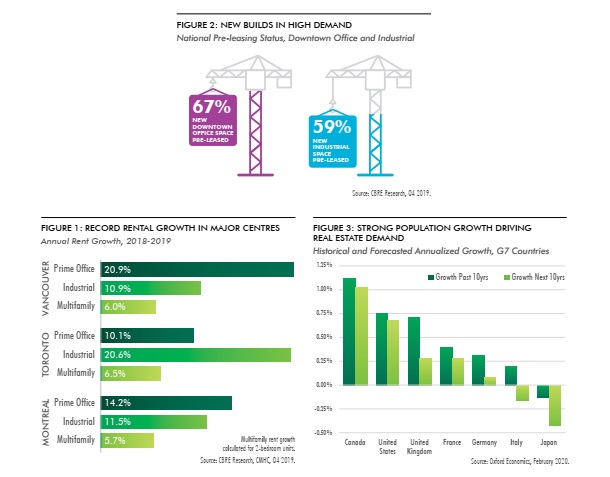
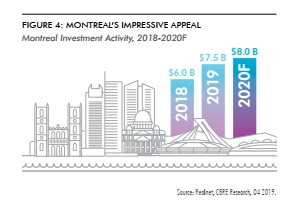
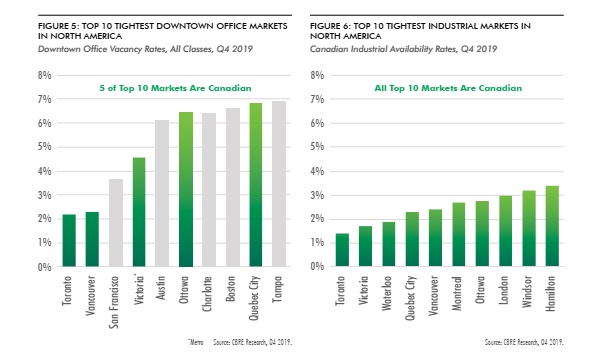
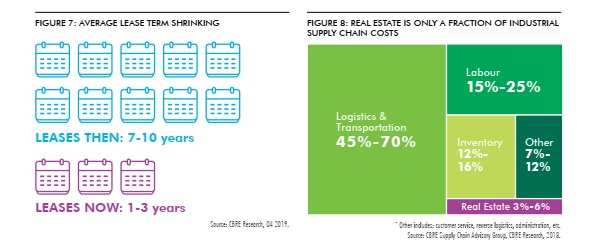

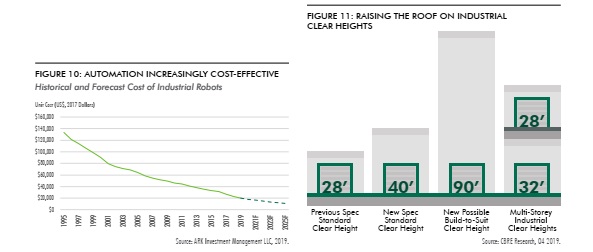

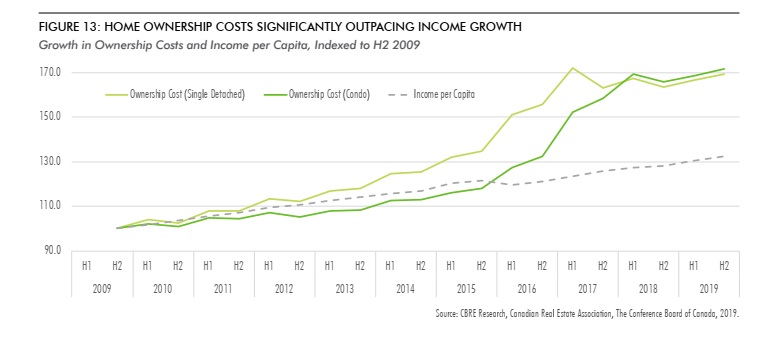
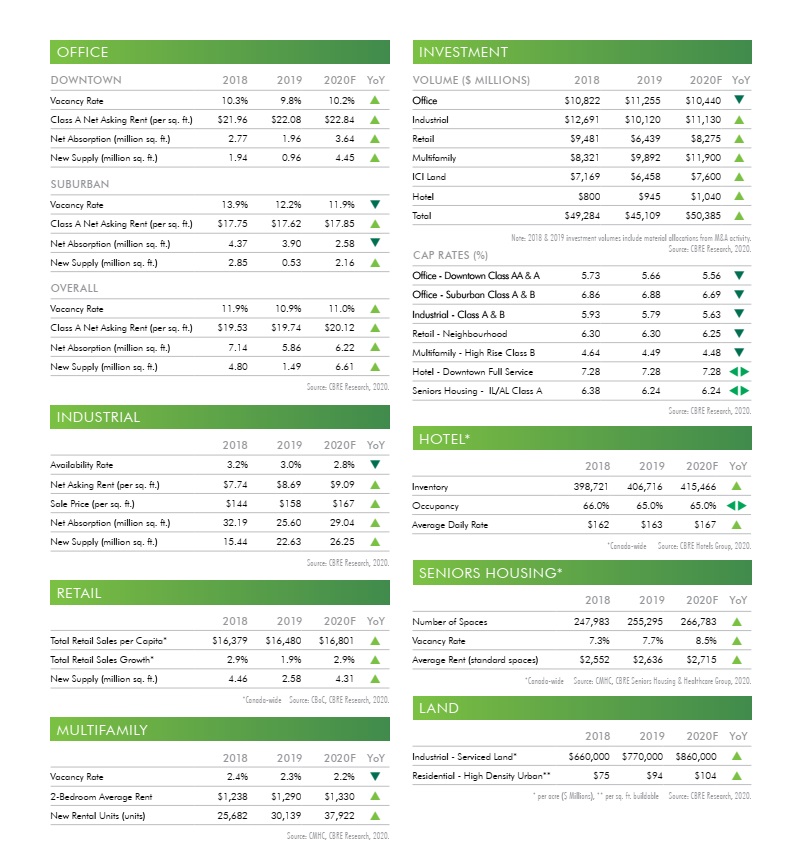


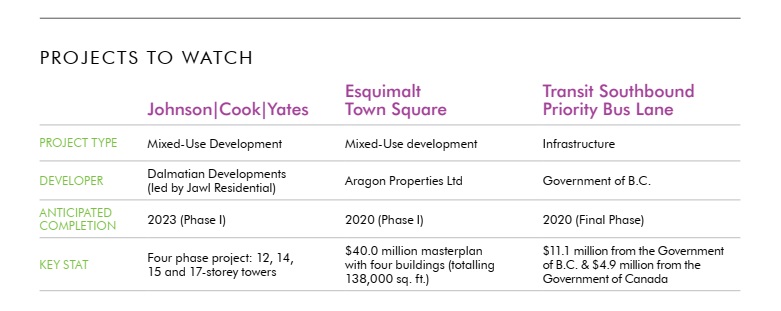
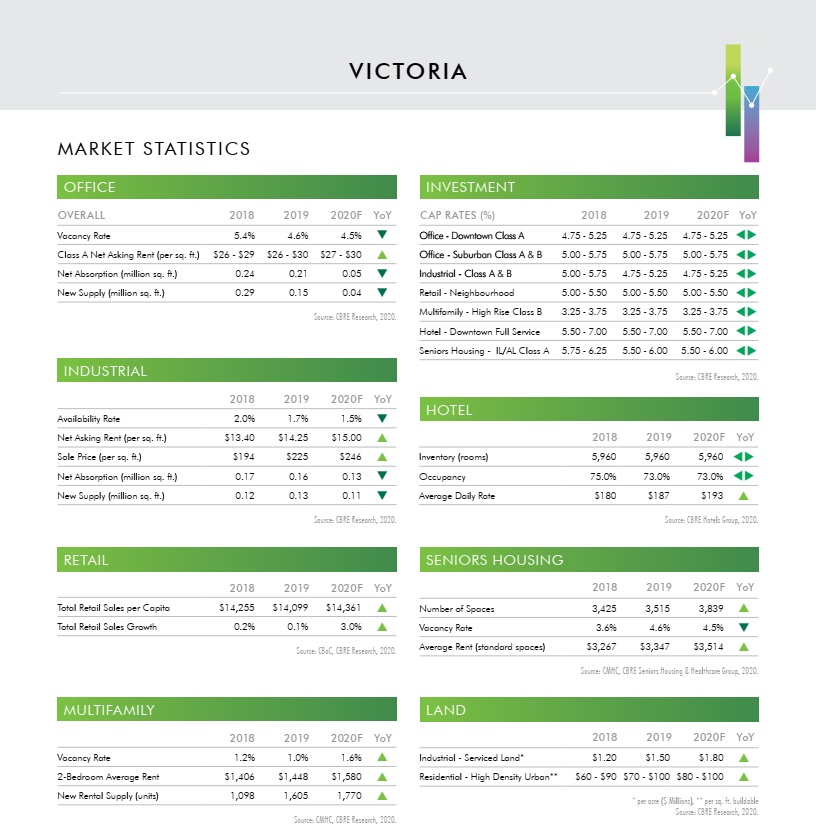
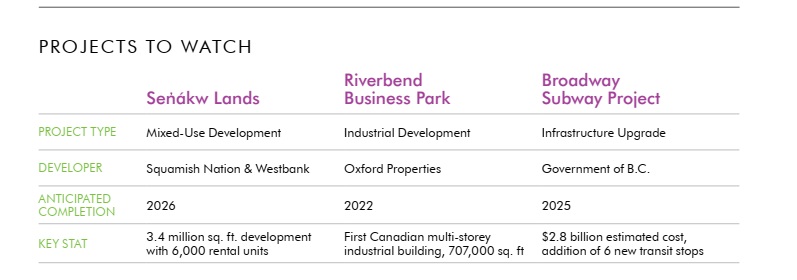
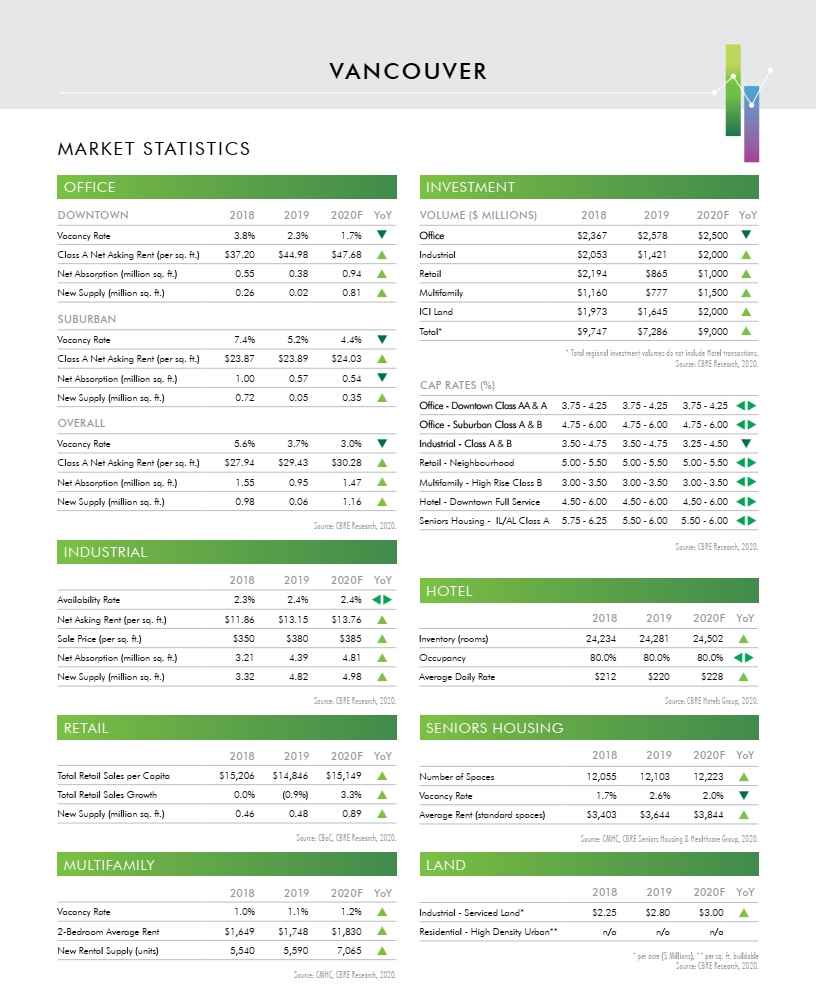
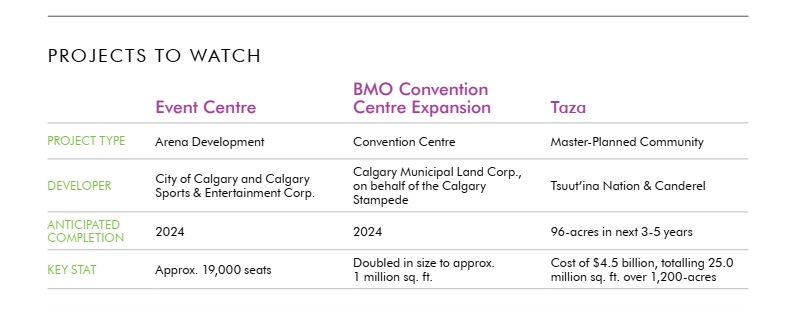
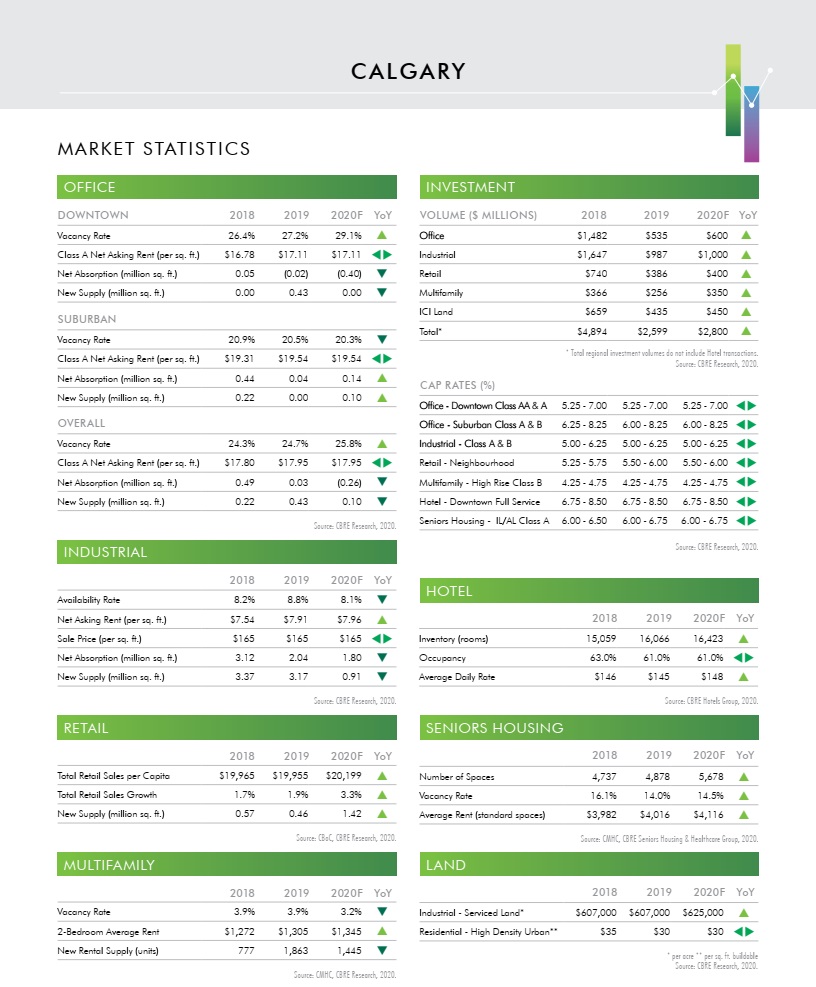

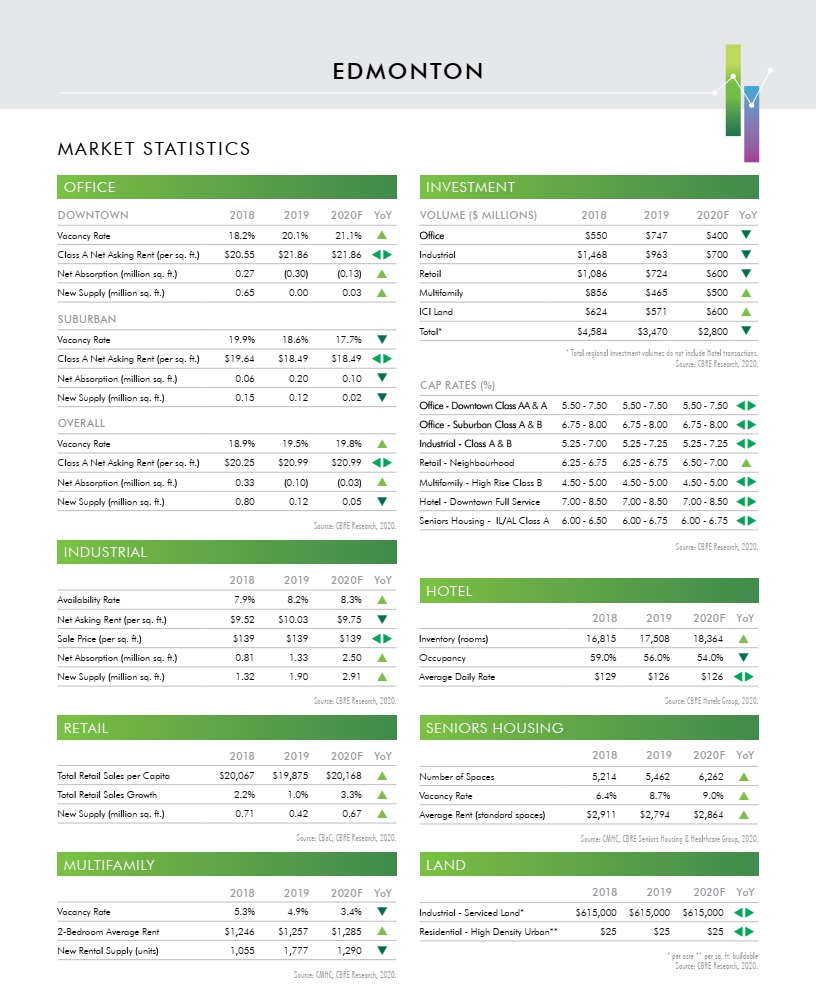



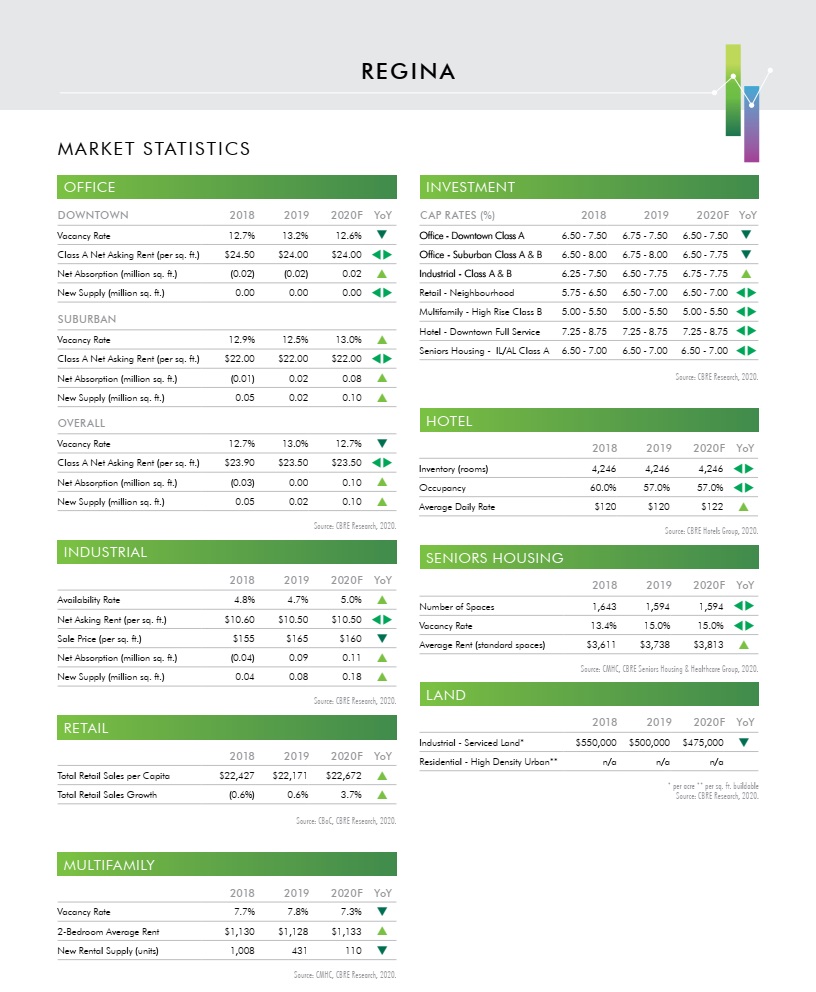
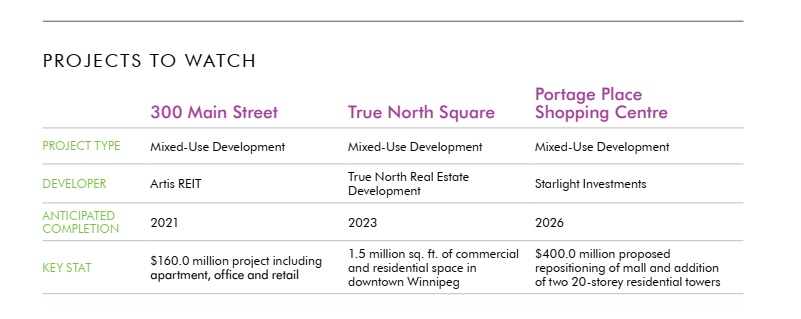
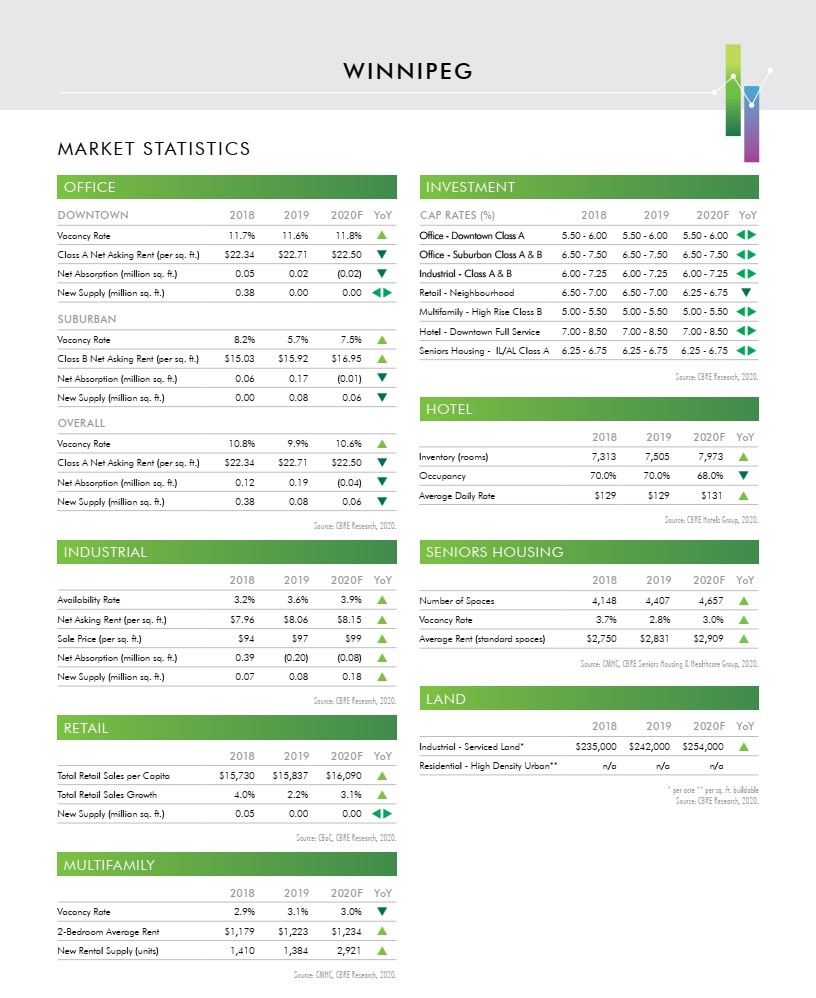
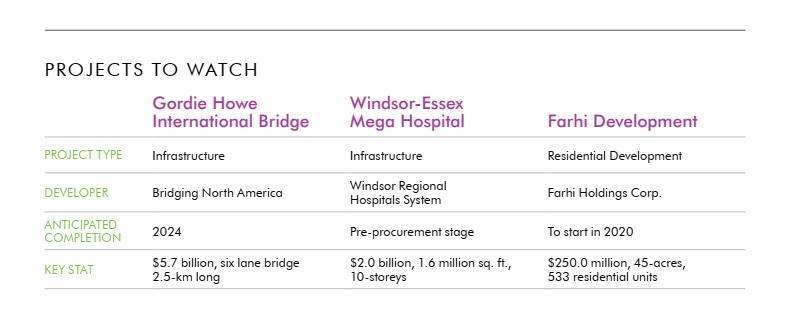
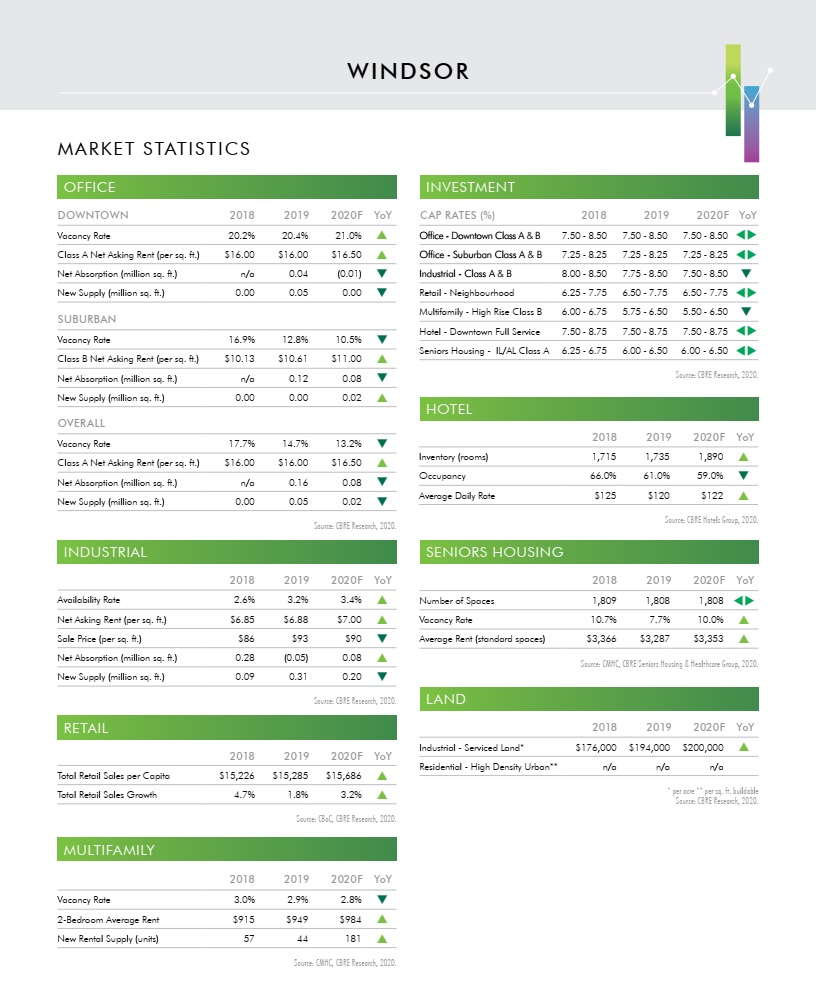
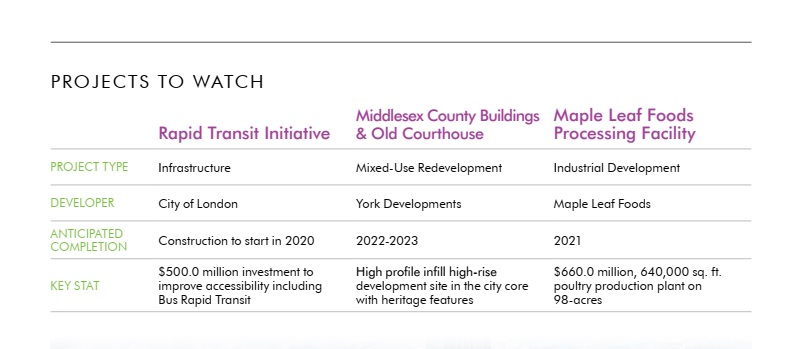

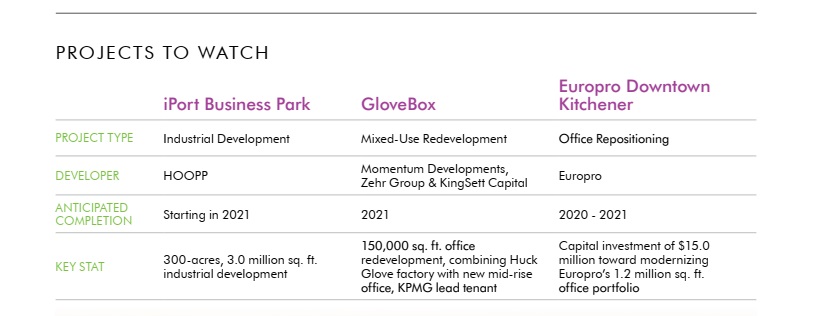
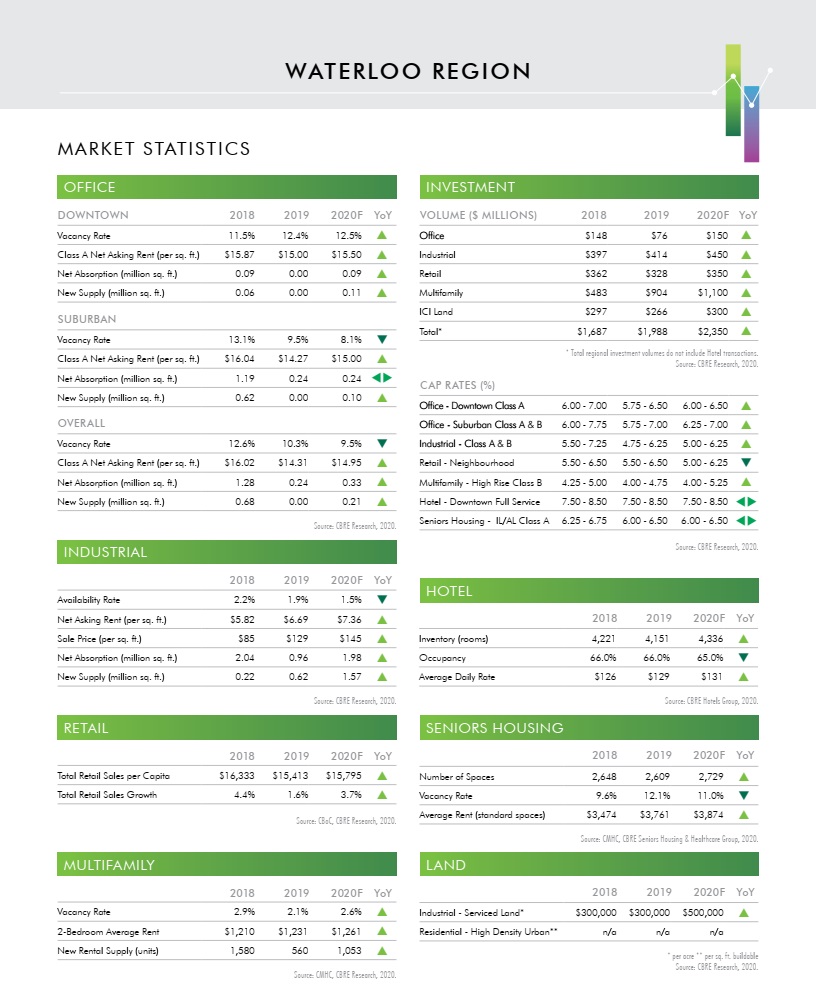
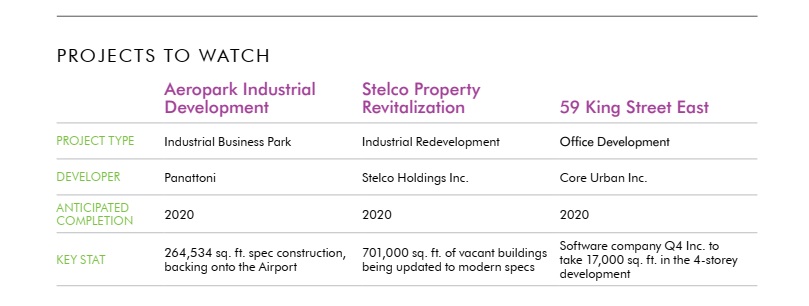
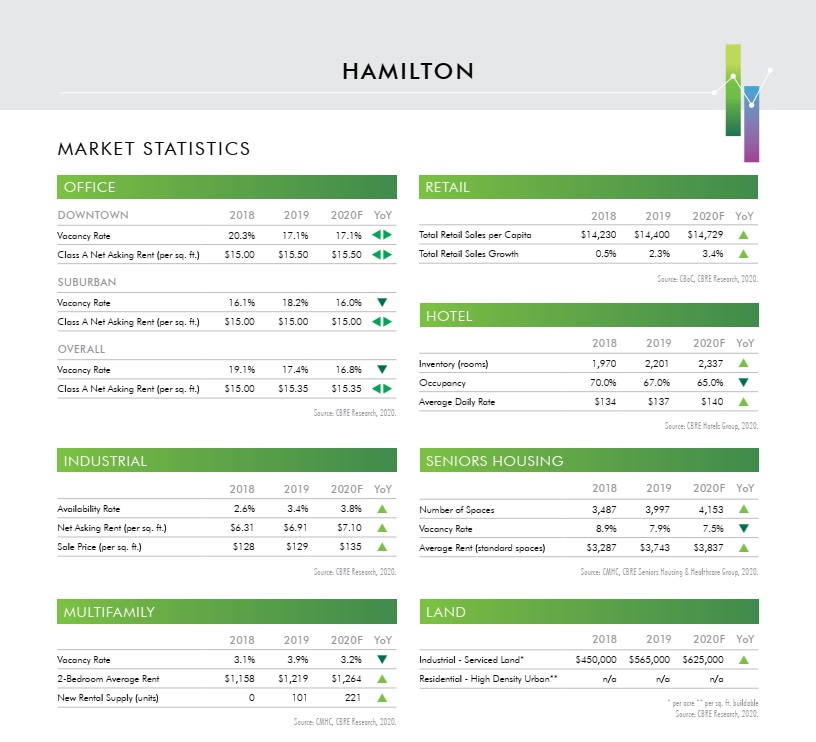
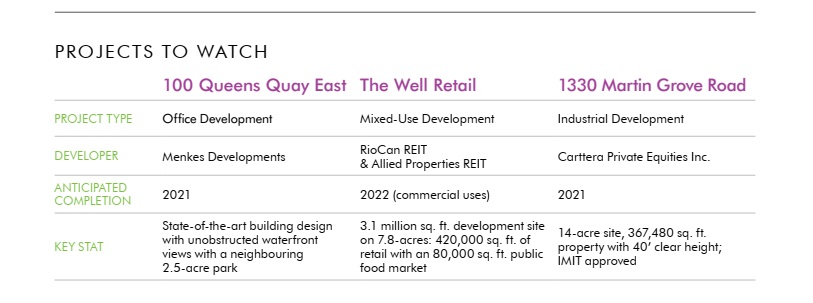
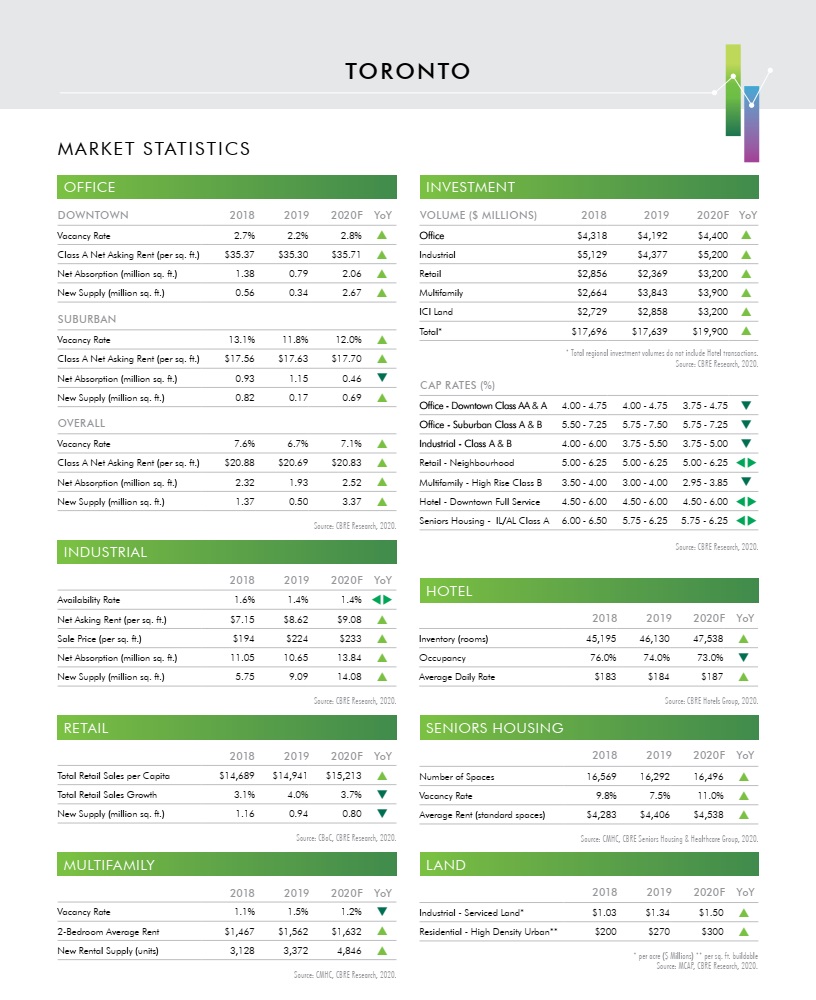

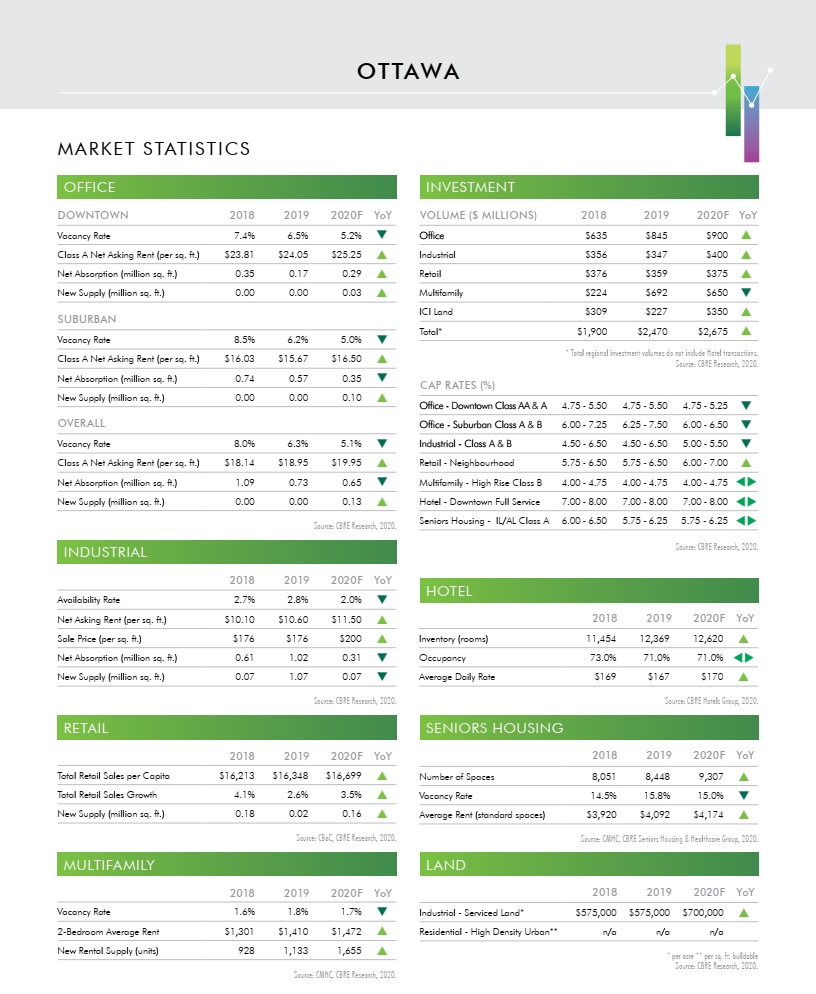
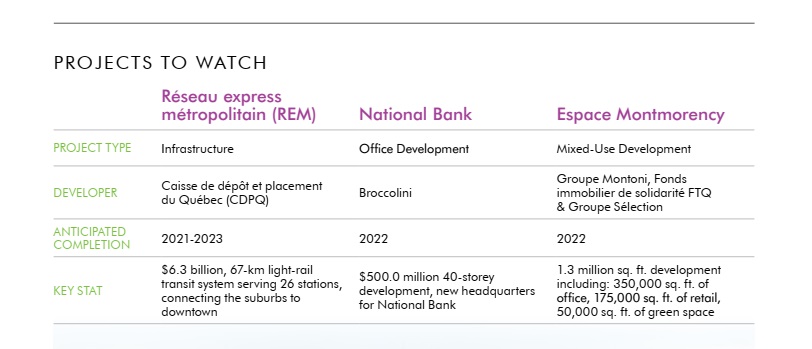

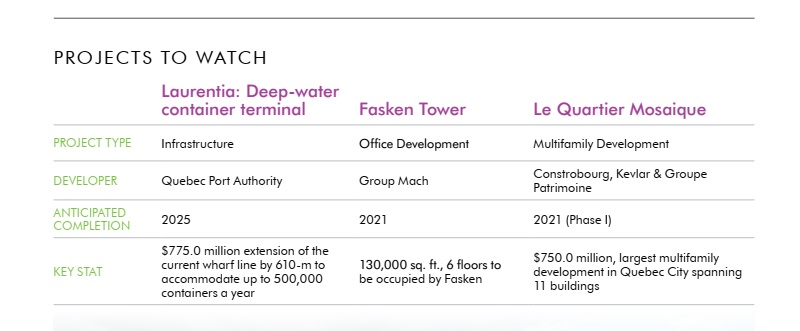
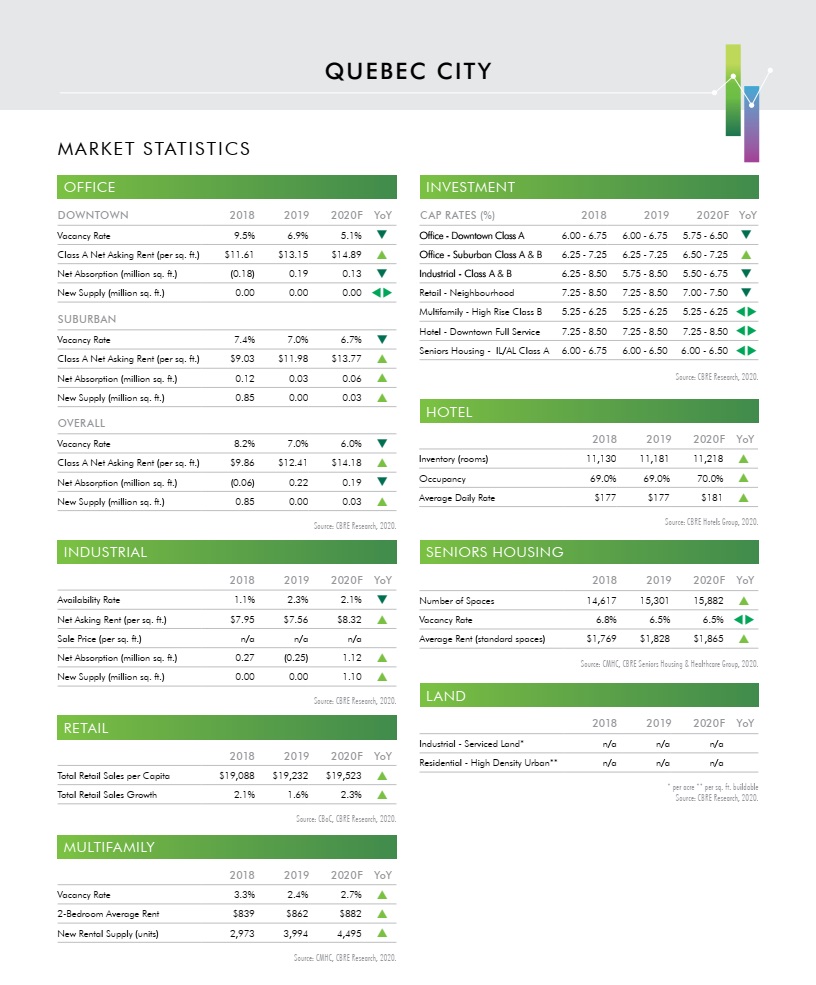
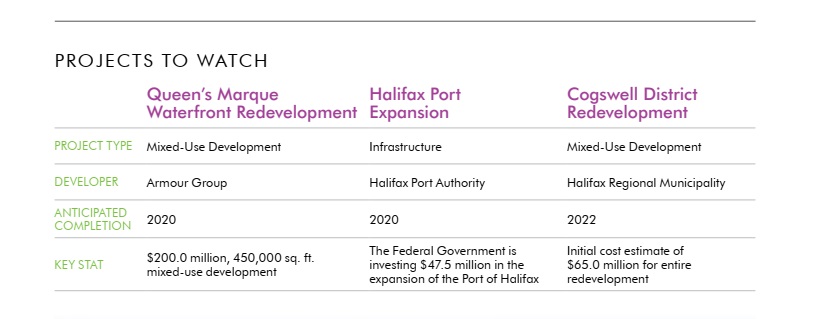

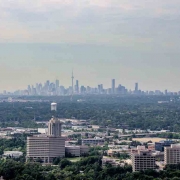


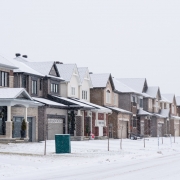



 Maziar Moini, Broker of Record - Home Leader Realty Inc.
300 Richmond St. W., #300, Toronto, ON M5V-1X2
Maziar Moini, Broker of Record - Home Leader Realty Inc.
300 Richmond St. W., #300, Toronto, ON M5V-1X2



